Key takeaways:
- Children aged 1 to 18 have different recommended sodium limits
- Most kids across every age range are exceeding these limits
- 1 in 10 children have elevated blood pressure
- A few simple dietary changes can help reverse the problem
Children are dependent on adult supervision when it comes to salt. Sadly, most kids of all ages are daily victims of a high sodium intake. Bad dietary habits in early life can lead to chronic health problems in adulthood. The good news is that adults can take steps to protect young people from the dangers of excess sodium. Read our guide to learn the hard facts and best practices for a healthier childhood diet.
What do safer sodium numbers look like?
Avoiding a high sodium intake isn’t dependent on a single number. The federal government’s latest edition of Dietary Guidelines for Americans recommends the following maximum daily sodium intake by age:
- Under 1,200 mg for kids aged 1-3
- Under 1,500 mg for ages 4-8
- Under 1,800 mg for ages 9-13
- Under 2,300 mg for ages 14-18
The American Heart Association (AHA) recommends less than 1,500 mg for adults, which could also help 18-year-olds develop healthier eating habits for later life. And frankly, teens and younger kids need all the good dietary advice they can get to navigate America’s salt-heavy food industry.
How childhood sodium intake really looks
Data from the Food and Drug Administration (FDA) shows that every youth demographic from ages 2 to 19 has a dangerously high sodium intake. The number of males and females following healthy guidelines are, respectively:
- Ages 2-4: Only 3 percent and 5 percent
- Ages 5-8: 3 percent for both
- Ages 9-13: 3 percent and 4 percent
- Ages 14-18: 3 percent and 23 percent
- Age 19: 3 percent and 16 percent
This is why 1 in 10 American children have elevated blood pressure and 1 in 25 aged 12-19 have hypertension (high blood pressure). Blood pressure issues can lead to many problems in adulthood including stroke, heart disease, and heart attack.
To fight this growing epidemic, we have to help kids develop healthier relationships with sodium from their earliest years. This depends on informed adults recognizing the saltiest offenders on the shelves and in the streets and steering their kids toward healthier choices.
Two problem areas: the fast-food industry and school meals
All but the most food-focused parents and guardians are unaware of just how much sodium their children consume. This mystery is compounded by the fact that adults only have control over one sphere of a child’s diet – their intake at home. And unfortunately, most kids are eating at least one meal a day somewhere else, either at school or with friends.
Fast food chains are concerning because they’re so popular with young people and easy for them to visit alone. Verywell Health covered a report released by the CDC revealing that more than a third of children and adolescents eat fast food on any given day. Parental income wasn’t a factor, meaning kids of all financial backgrounds are consuming too much sodium.
Previously, we’ve recommended the lowest sodium fast food vendors while reviewing how extremely high the sodium numbers are in everything from sauce portions to club sandwiches. Did you know that a single packet of McDonald’s buffalo sauce contains 800 mg of sodium? Parents empowered with this information can educate their children on how harmful even the smallest fast-food portions can be.
While they’re not quite as bad as fast food, school meals pose another health threat. Thankfully, the USDA is taking steps to lower school meal sodium that while not perfect, are headed in the right direction.
Tackling the three Ps
The three Ps of excess sodium are the processed, packaged, and prepared foods that constitute so much of the food industry. In fact, more than 70 percent of our daily sodium intake comes from the three P’s, with kids consuming an average of:
- 33 mg per medium-sized cookie (few kids will eat only one!)
- 45-100 mg per 12-ounce can of soda
- 223 mg per bowl of cereal
- 765 mg per slice of frozen pizza, and 957 mg per restaurant-prepared slice
When it comes to avoiding the three Ps, learning how to decode sodium labels is a valuable skill for adults and kids alike. The NOVA food classification system is another useful resource for gauging how processed certain foods are before giving them to their children.
Rustle up a new reality through alternative options
Adults shouldn’t feel powerless against the sodium tide. The kitchen is a powerful place where you can make a lifelong positive difference in your kids’ health. Start small by making fresh fruits or unsalted nuts an alternative to candies and cookies. If possible, pack lunches for your children rather than having them eat at school.
Avoid the three Ps as much as possible and buy more fresh or frozen meat and vegetables. Choose reduced and low sodium canned foods and always rinse off the contents after opening to further remove excess sodium.
Kids like drinks with lots of sodium and sugar, so it’s the adult’s job to make water fun for the younger ones. Colorful straws can brighten up any glass, and so can flavor-infusing additions like frozen fruit chunks or cucumber slices (which also appeal to older kids).
Finally, there’s mastering the age-old adult trick of sneaking healthy options into childhood diets without them noticing! How? Try adding any of the four delicious flavors of our SaltMe®! Chips to their lunch box and switching your traditional table salt for an all-natural MicroSalt® saltshaker. These healthier options pack the same salty taste your kids love with only half the sodium.
Follow MicroSalt® for a more sodium education
Childhood sodium intake is just one of many salt-centric subjects we keep tabs on. Our newsroom is regularly updated with articles on initiatives, regulations, and recipes that can help consumers and the food industry embrace a low-sodium lifestyle. Contact us to learn more.




